22 Secrets of the One-Dollar Bill
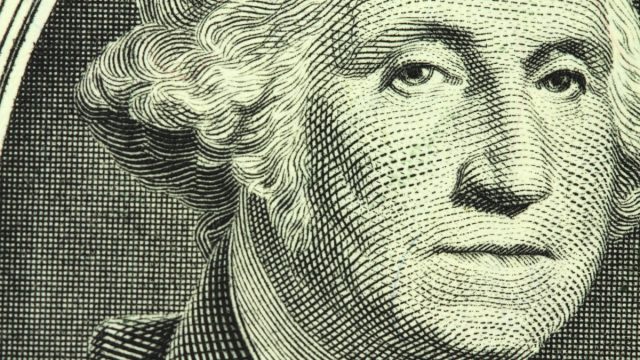
The $1 bill is one of the most familiar objects in the U.S., with George Washington’s stern face gracing the front and the pyramid and eagle design on the back. But while we’ve carried this currency in our pockets since we started receiving an allowance, there is still a lot you probably don’t know. From its design quirks to its largely forgotten history, there are plenty of one-dollar bill secrets to be discovered. Read on to get a deeper understanding of an item you use every day and maybe even find out the answers to some questions you’ve always had.
RELATED: 46 Airplane Facts You Should Know Before Booking Your Next Trip.
22 Hidden Secrets Surrounding the Dollar Bill
1. The dollar bill hasn’t changed in over 50 years.
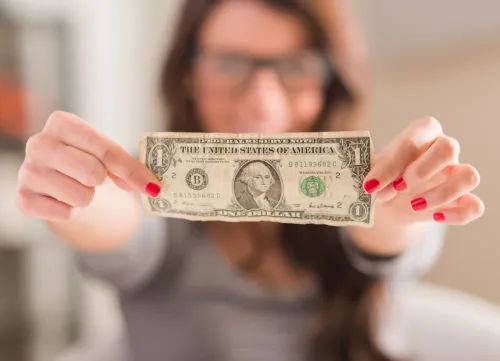
The $5, $10, $20, and $50 bills have all been redesigned in the last decade or so, with the Federal Reserve adding color and watermarks to outsmart counterfeiters. But the dollar bill has remained unchanged since 1963. The government has even made legislative efforts to prevent changes from taking place. According to Section 116 of the Financial Services and General Government Appropriations Act, spending money to redesign the $1 is prohibited. The reason why it’s not been updated, according to the U.S. Treasury Department, is that this denomination “is infrequently counterfeited.”
But another possible reason to take into account is likely the lobbying done by the vending machine industry, which would have to redesign its machines to accommodate new bills should the current design get an overhaul.
2. “In God We Trust” wasn’t always printed on the dollar.
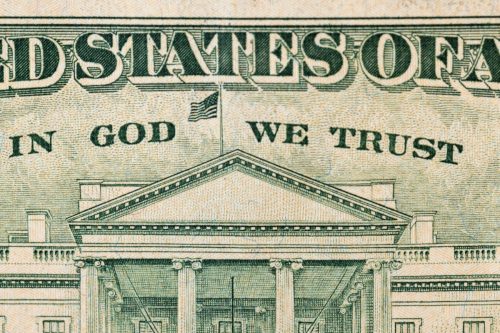
The last change made to the dollar bill was the addition of the line, “In God We Trust,” which was added in 1963. This phrase started to be included on all U.S. currency following a law passed by President Dwight Eisenhower in 1956, making it the country’s official motto.
3. Neither was George Washington.
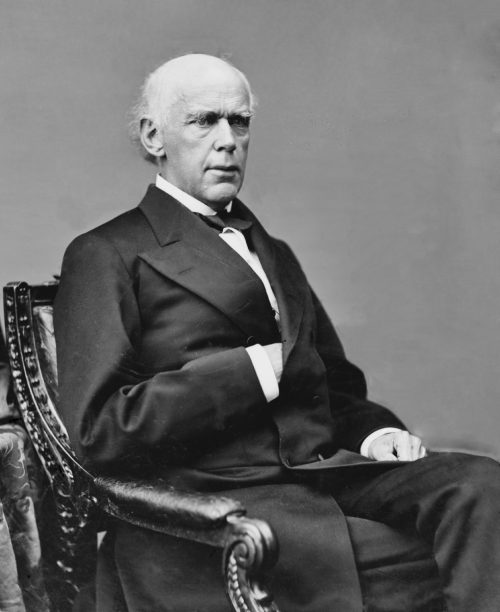
While we associate our nation’s first president with the $1 bill, his was not actually the first face to appear on the currency. That honor went to Salmon P. Chase, whose face was on America’s original $1 note, which was issued in 1862, during the Civil War.
As Secretary of the Treasury at the time, Chase also happened to be the man who was designing the country’s first bank notes. His vanity project lasted until 1869, the year George Washington took his place.
4. A different Washington once appeared on a different type of dollar.

The first First Lady, Martha Washington, was one of the faces of the $1 silver certificate. First printed in 1886, the certificates were backed by the U.S. government’s silver deposits and featured an engraving of Martha based on her portrait by Charles Francois Jalabert. The silver certificates had a long run but were discontinued in 1957, though the last printing featuring Martha (this time with her husband) ran in 1896. To date, Martha Washington and Pocahontas are the only two women to have ever appeared on American paper currency.
RELATED: 13 Bizarre Facts About Friday the 13th You Never Knew.
5. It’s not made of paper.
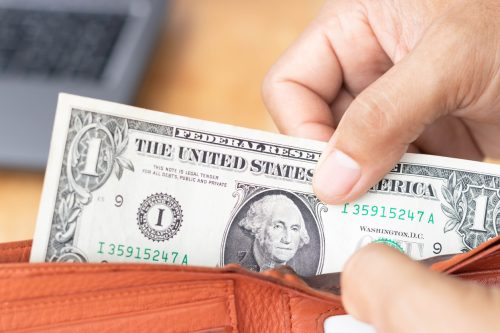
We may call it “paper money,” but the currency is actually composed of 75 percent cotton and 25 percent linen. According to the Treasury’s Bureau of Engraving and Printing, that material is delivered (with the exception of what’s used for $100 bills) in loads of 20,000 sheets that are each painstakingly tracked. The various colors of ink used are mixed specially by the Bureau for reasons of security.
6. It costs 2.8 cents to produce a dollar.
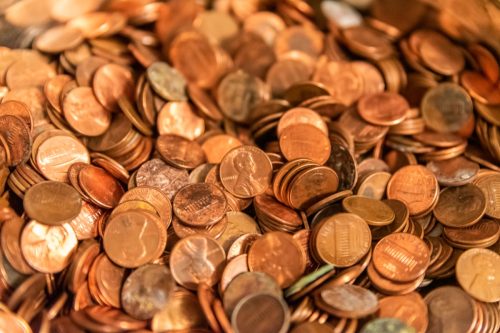
Not a bad return on investment: The Federal Reserve spends about 2.8 cents to produce every $1 bill (a much better deal than the 2.72 cents it costs to produce a penny). While the $2 bill carries the same price tag, the bills get costlier from there. The $10 bill costs 4.8 cents, the $20 costs 5.3 cents, and the $100 bill costs 8.6 cents to produce.
7. It falls out of circulation in less than seven years.
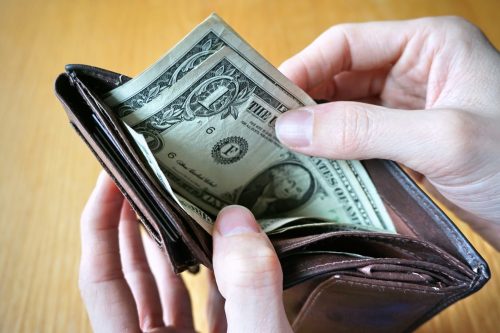
According to the Federal Reserve, a dollar falls out of circulation on average about every 6.6 years. That’s more frequently than the average $20 bill (7.8 years), $50 bill (12.2 years), and $100 bill (22.9 years)—but less frequently than the $5 bill (4.7 years) and $10 bill (5.3 years).
8. It has its detractors.

Because of the cost and need to frequently reprint the heavily circulated $1 bills, it has acquired some powerful enemies. In 2013, a group of five senators, including Arizona’s John McCain and Iowa’s Tom Harkin, united behind an effort to switch to a $1 coin, as reported by USA Today. According to the senators and consumer advocates supporting them, such a shift would save the government $13.8 billion over three decades. But for various reasons (the vending machine lobby prominent among them), the effort went nowhere.
9. You can track your dollar.

You can see where your dollar has been and where it’s going by using the site Where’s George. Just enter the serial number of the dollar in your wallet, and you can find out what zip codes it’s passed through to get to you and keep an eye on where it heads after you spend it.
10. The pyramid on the dollar bill represents the young country.
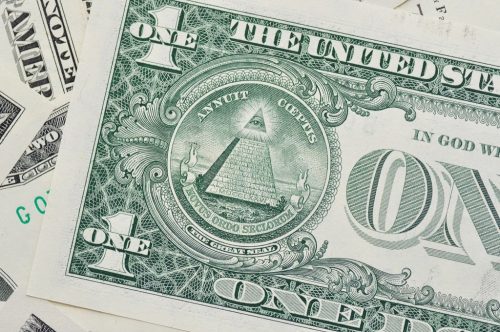
The pyramid on the back of the bill represents the young United States, with 13 steps representing the original 13 colonies, and an unfinished top reflecting the growth and expansion the country still had to do. The floating “Eye of Providence” at the top represents an all-seeing god watching over us—but not, as some conspiracy theorists would tell you, the Illuminati.
RELATED: 35 Disney Facts That Will Bring Out Your Inner Kid.
11. The eagle represents war and peace.
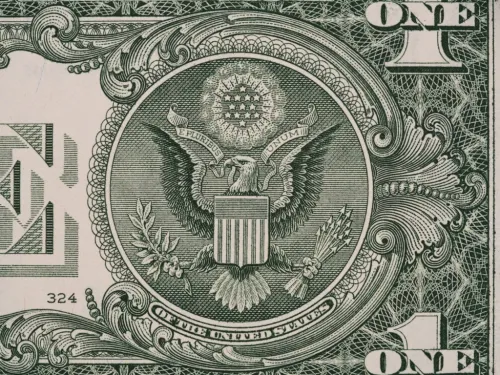
Our national bird appears on the back of the dollar bill and is meant to convey both war and peace, with arrows held in its left talon and an olive branch in its right talon. The same symbol appears on our Great Seal, which was designed by Charles Thomson, the first secretary of the Continental Congress. He stated that the bald eagle represents “freedom, liberty, and independence.”
12. The number 13 is everywhere.
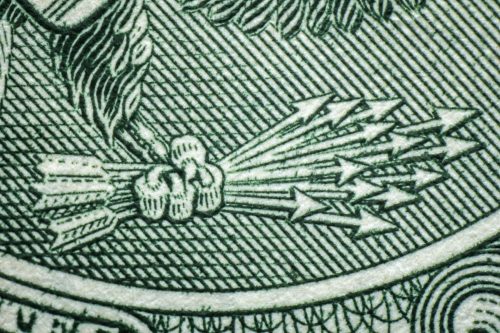
We already mentioned the 13 steps on the pyramid, but look further and you’ll see that the number 13 pops up in a few other places on the currency. There are 13 arrows in the eagle’s talon as well as 13 stripes and 13 stars on the Great Seal.
13. Bigger bills are much harder to come by.
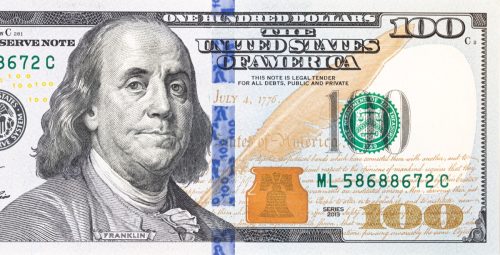
Decades ago, the Federal Reserve Board printed currency in denominations of $500, $1,000, $5,000, and $10,000. These were primarily used for bank transfer payments, which became unnecessary after more advanced (and secure) ways of transferring money were introduced. Production ceased on these big bills during World War II, and in 1969, the Secretary of the Treasury announced that the department would stop distributing the currency.
They are still legal tender, but you might want to hold on to them if you come into possession of them—there are just a few hundred $5,000 and $10,000 bills in existence.
14. The U.S. once produced $100,000 bills.
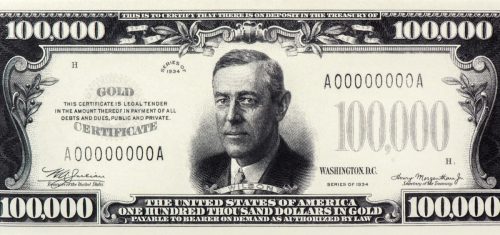
The largest denomination of official U.S. currency ever printed was the $100,000 Series 1934 Gold Certificate. Featuring a portrait of President Woodrow Wilson, these notes were printed from Dec. 1934 to Jan. 1935 and were mainly used for official transactions between Federal Reserve Banks—so it was unlikely that a member of the general public would get their hands on one. (Despite rumors to the contrary, the Treasury Department never produced a $1 million currency note.)
15. There are 14.3 billion dollar bills in circulation.
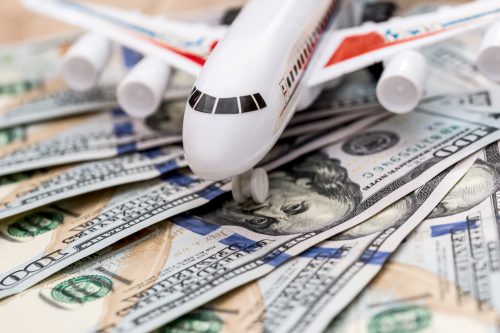
According to the Federal Reserve’s latest calculations from 2022, there are a total of 54.1. billion bills circulating in the United States. The strangest part? The dollar isn’t even the most common bill. That breaks down roughly as follows:
- 14.3 billion $1 bills
- 1.5 billion $2 bills
- 3.5 billion $5 bills
- 2.3 billion $10 bills
- 11.5 billion $20 bills
- 2.5 billion $50 bills
- 18.5 billion $100 bills
16. It takes a lot to tear them.
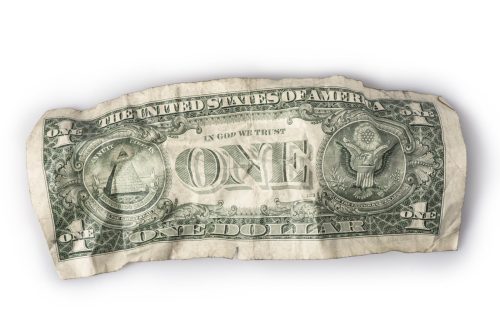
According to CNBC, you would have to fold a bill back and forth about 4,000 times before it actually tears. While that may sound like a lot, for dollar bills, that threshold is reached within about 22 months, the Federal Reserve reports.
RELATED: 39 Facts About Storms That Will Make You Run for Cover.
17. And you can still use them when they’re torn.
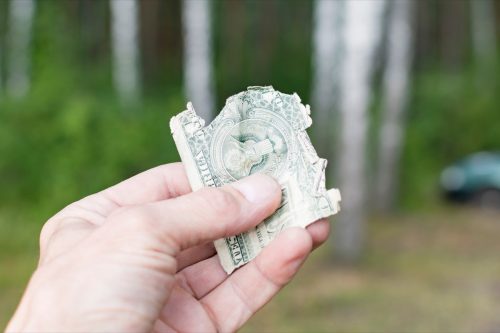
But if you do happen to tear a bill, it’s still OK to use it. As long as three-quarters of a bill is intact, it can be exchanged for a whole bill. If it’s torn in half, as long as the serial number matches on both sides, it can be used. If it’s badly mutilated, you can actually send the bill to the Mutilated Currency Division of the Bureau of Engraving and Printing, where it is reviewed and often replaced (the group deals with about 30,000 claims a year).
18. A star on a dollar bill means it’s a replacement.
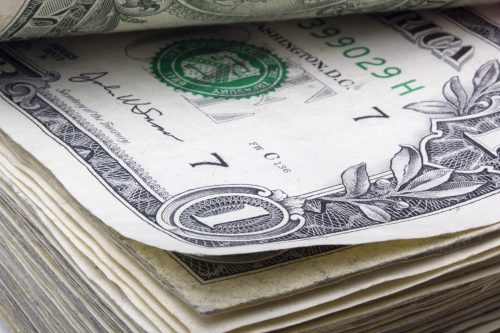
A “star” on a bill means it’s a replacement for one with an error. When an imperfection is detected on a bill after a serial number has already been overprinted, the Bureau of Engraving and Printing replaces it with a “star note” before it goes into circulation. A star note is a note with the same serial number with an asterisk added to the end of it. These bills are more scarce than notes with traditional serial numbers, but carry the exact same value as any other dollar.
19. One dollar detail has inspired decades of conspiracy theories.
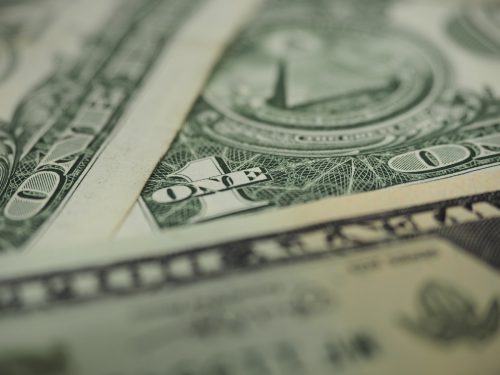
If you look closely at the frame surrounding the numeral “1” at the top right corner of the dollar bill, you may spot what appears to be a small bird or owl peeking out from the top left. And when we say “look closely,” we mean it—you’d need a magnifying glass to make out these figures.
Some have guessed that it represents Minerva, the Roman goddess of wisdom, whose sacred bird was the owl and who is a common figure in Illuminati conspiracy theories. Others argue that it is actually a small spider, partly because of the webbed design that surrounds it. This has also inspired wide-ranging conspiracy theories. None of these guesses have ever been confirmed, however. In reality, the unidentified design is likely just a quirk of the pattern.
20. They’re full of bacteria and other gross things.
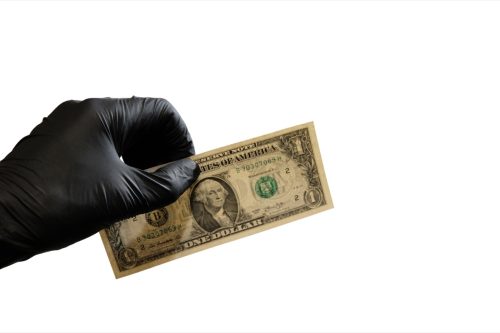
Changing so many hands, it’s probably no surprise that dollar bills are not the cleanest objects. A 2017 study published by PLOS One found 100 different strains of bacteria on the dollar bills tested, in addition to viruses, pet DNA, and other materials.
21. You can find drugs on most of them.
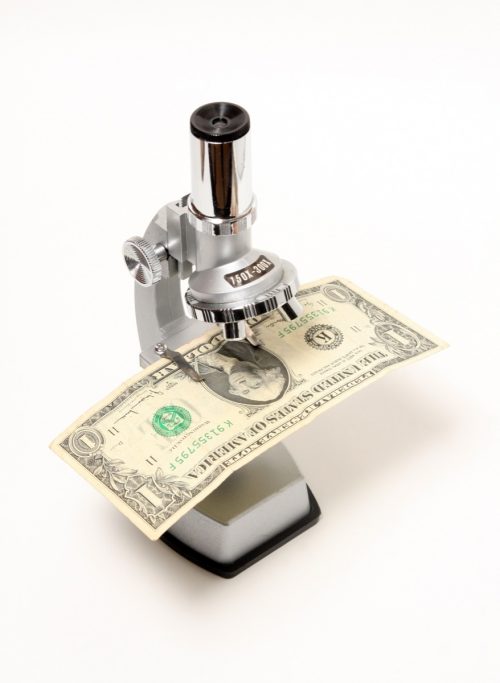
In addition to bacteria, fungi, and even feces, dollar bills also often contain traces of drugs, namely cocaine. However, other studies have found that other drugs, including morphine, heroin, methamphetamine, and amphetamine can also be found on our bills.
22. You can track which Federal Reserve Bank issued your bill.
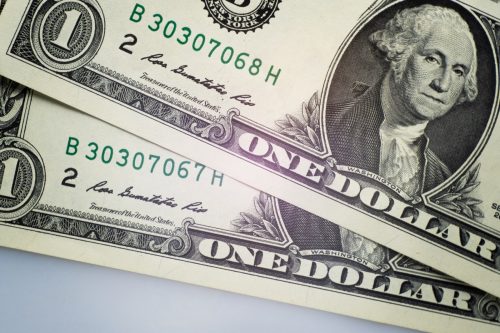
You may have never noticed the serial number on your dollar bill before, but if you look closely you’ll see two letters and eight numbers. The letters are all between A and L and are indicative of the bank that initially issued the bill. Below, you can see which city each letter stands for:
- A: Boston
- B: New York
- C: Philadelphia
- D: Cleveland
- E: Richmond, Virginia
- F: Atlanta
- G: Chicago
- H: St. Louis
- I: Minneapolis
- J: Kansas City, Missouri
- K: Dallas
- L: San Francisco
Wrapping Up
That’s it for our list of dollar bill facts, but be sure to check back in with us soon for even more trivia. You can also sign up for our newsletter to enjoy similar content, as well as the latest in wellness, entertainment, and travel.
- Source: https://www.uscurrency.gov/sites/default/files/downloadable-materials/files/en/1-1963-present-features-en.pdf
- Source: https://www.bep.gov/currency/how-money-is-made
- Source: https://federalreserve.gov/faqs/currency_12771.htm
- Source: https://federalreserve.gov/faqs/how-long-is-the-life-span-of-us-paper-money.htm
- Source: https://blogs.loc.gov/law/2015/11/our-national-bird-pic-of-the-week/
- Source: https://federalreserve.gov/paymentsystems/coin_currcircvolume.htm
- Source: https://www.bep.gov/services/mutilated-currency-redemption/submit-a-request
- Source: https://journals.plos.org/plosone/article?id=10.1371/journal.pone.0175527
- Source: https://www.sciencedirect.com/science/article/abs/pii/S0379073801004017
- Source: https://www.bep.gov/currency/serial-numbers